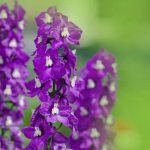Are you struggling to come up with creative and appealing shady landscape ideas for your outdoor space? Shady areas in your yard or garden can present both challenges and opportunities when it comes to landscaping.
In this article, we will explore the various aspects of designing, planting, and maintaining a beautiful and inviting shady landscape. From choosing the right plants to incorporating hardscaping elements, we’ll provide you with tips and inspiration to create a cozy and relaxing atmosphere in your shady outdoor space.
When it comes to shady landscape ideas, there is a wide range of possibilities for transforming these areas into visually stunning and functional spaces. Whether you have a small shaded corner or an entire yard with limited sunlight, understanding shade-tolerant plants and design techniques is essential for successfully enhancing these areas. With the right approach, you can turn your shady landscape into an attractive and vibrant part of your outdoor environment.
In the following sections, we will delve deeper into the different aspects of working with shady landscapes, including plant selection, design principles, maintenance tips, DIY projects, and more. By embracing the beauty of shaded environments and making the most of their unique characteristics, you can create a lush and inviting outdoor space that you’ll enjoy for years to come. Let’s get started on exploring the challenges and opportunities of shady landscapes.
Choosing the Right Plants for Shady Areas
Understanding Shade Tolerant Plants
When it comes to creating a beautiful and thriving shady landscape, choosing the right plants is essential. Shade tolerant species are able to thrive in low light conditions, making them ideal for areas with limited sun exposure. Some popular shade tolerant plants include ferns, hostas, astilbes, and coral bells. These plants not only add lushness to shady areas but also come in a variety of colors and textures, allowing for a visually diverse landscape.
Consider the Soil and Moisture Levels
Before selecting shade tolerant plants for your outdoor space, it’s important to consider the soil and moisture levels of the area. Some shade loving plants prefer moist soil, while others can tolerate drier conditions. By understanding the specific needs of each plant, you can create an environment where they will thrive. Additionally, amending the soil with organic matter can improve its ability to retain moisture, which is beneficial for many shade tolerant species.
Creating Visual Interest With Different Plant Heights
To add visual interest and depth to your shady landscape, consider incorporating a variety of plant heights. Taller shade tolerant species like hellebores or foxgloves can be planted towards the back of a border or garden bed, while shorter plants such as foamflowers or barrenworts can be placed towards the front. This layering technique creates a sense of dimension and ensures that all plants receive adequate sunlight without being overshadowed by taller varieties.
By understanding shade tolerant species and their specific requirements, you can create a lush and vibrant shady landscape that enhances the beauty of your outdoor space. With careful consideration of soil conditions, moisture levels, and varying plant heights, you can design an inviting and visually striking environment that thrives in shaded areas.
Designing an Inviting Shady Outdoor Space
Designing a relaxing and inviting outdoor space in shady areas can be a challenge, but with the right approach, it is definitely achievable. When considering how to create a cozy atmosphere in shady landscapes, it’s important to take into account the specific conditions of these areas. Shady landscapes often have less direct sunlight and may also have higher moisture levels, which can affect plant growth and overall ambiance.
One key aspect of designing an inviting shady outdoor space is to carefully select the right furniture and accents. Opt for comfortable seating options that promote relaxation and leisure. Consider adding cushions and throws in warm, inviting colors to create a sense of coziness. Additionally, incorporating small tables or surfaces for holding drinks or books can enhance the functionality and comfort of the space.
In addition to choosing the appropriate furniture, lighting plays a crucial role in creating a welcoming atmosphere in shady landscapes. Since natural light may be limited in these areas, integrating soft outdoor lighting such as string lights, lanterns, or even solar-powered fixtures can help illuminate the space while contributing to its cozy ambiance.
| Aspect | Description |
|---|---|
| Furniture Selection | Choose comfortable seating options with warm-colored cushions and throws |
| Outdoor Lighting | Integrate soft lighting such as string lights or lanterns to illuminate the area |
Shady Landscaping
When it comes to shady landscaping, incorporating hardscaping and pathways is essential for both functionality and aesthetic appeal. Shady areas can often feel dark and uninviting, but with the right design elements, you can transform these spaces into beautiful outdoor retreats. Here are some tips for incorporating hardscaping and pathways into your shady landscape:
- Consider adding a stone or gravel pathway to guide visitors through the shady area. This not only adds functionality by creating a clear walking path but also adds visual interest to the space. Additionally, using materials like gravel allows for better water drainage in shady areas, helping to prevent water buildup.
- Incorporate hardscaping elements such as pavers or retaining walls to create designated seating areas within the shady landscape. These features not only provide additional functionality but also add structure and definition to the space. Add comfortable outdoor furniture and cozy cushions to create a relaxing atmosphere within the shaded area.
- Incorporating water features such as fountains or small ponds can add tranquility and natural beauty to a shady landscape. The sound of flowing water can create a soothing ambiance, while the visual appeal of a water feature can enhance the overall aesthetic of the shaded space.
By integrating these hardscaping elements and pathways into your shady landscape, you can create an outdoor oasis that is both functional and visually appealing. With careful planning and thoughtful design choices, even the shadiest of outdoor spaces can be transformed into inviting retreats that are perfect for relaxation and enjoyment.
Maintaining Shady Gardens
Shady gardens require specific attention and care to thrive, as the lack of direct sunlight can pose challenges for plant growth. One essential tip for maintaining a shady garden is to regularly monitor the moisture levels in the soil.
Since shaded areas tend to retain more moisture, it’s important to ensure that the soil has proper drainage to prevent waterlogged roots. Additionally, using a moisture meter can help you determine if your plants are receiving adequate water or if they are being overwatered.
Another crucial aspect of maintaining a shady garden is pruning and trimming vegetation to promote airflow and prevent overcrowding. The limited light in shady areas means that plants may grow more densely, so regular pruning is necessary to avoid issues such as mold, mildew, and disease. Be sure to remove any dead or decaying plant material, as these can attract pests and detract from the overall health of your garden.
Furthermore, it’s important to provide the necessary nutrients for the plants in a shady landscape. Using a balanced fertilizer formulated for shade-loving plants can help ensure that they receive the essential nutrients they need to thrive in low light conditions. Additionally, applying a layer of mulch around the base of plants can help retain moisture and provide insulation against temperature fluctuations.
| Tip | Details |
|---|---|
| Monitor soil moisture | Use a moisture meter to check if your plants are receiving adequate water. |
| Pruning and trimming | Regularly trim vegetation in shady areas to promote airflow and prevent overcrowding. |
| Provide nutrients | Use a balanced fertilizer formulated for shade-loving plants and apply mulch around their base. |
DIY Shady Landscape Projects
Shady landscapes can present unique challenges for homeowners and gardeners, but they also offer a wonderful opportunity to create a cozy and inviting outdoor space. With some creative DIY projects, you can enhance shady areas of your yard and turn them into beautiful and functional spaces that you can enjoy all year round.
Here are some creative and budget-friendly ideas for DIY shady landscape projects:
1. Shade-loving planters: Create custom planters using shade-tolerant plants such as ferns, hostas, and caladiums. Use repurposed containers like old barrels, buckets, or wooden crates to add a touch of rustic charm to your shady garden.
2. Fairy gardens: Embrace the magical atmosphere of your shady landscape by constructing a whimsical fairy garden. Use miniature furniture, tiny houses, and delicate plants like mosses and miniature ferns to create an enchanted oasis in your shaded area.
3. Creative lighting: Enhance the ambiance of your shady outdoor space with creative lighting solutions. Hang string lights or lanterns from tree branches or install solar-powered pathway lights to illuminate walkways and add a cozy glow to your shaded garden.
By incorporating these DIY projects into your shady landscape, you can transform it into a beautiful and functional space that reflects your personal style and enhances the natural beauty of the area. Whether you have a small backyard patio or a sprawling woodland garden, these creative ideas will help you make the most of your shaded outdoor space.
Shady Landscape Plant Pairings
When it comes to shady landscape plant pairings, the goal is to create a visually appealing and vibrant outdoor space that thrives in low-light conditions. By carefully selecting and pairing the right plants, you can transform your shady area into a lush and stunning garden. Whether you’re looking to add pops of color, texture, or height, there are plenty of combinations to consider.
Considering Foliage Varieties
When choosing plant pairings for shady areas, it’s important to consider foliage varieties. Pairing plants with different leaf shapes, sizes, and colors can add depth and visual interest to your landscape. For example, you might pair large-leaved hostas with fine-textured ferns to create a striking contrast. Additionally, combining variegated foliage with solid-colored leaves can add dimension to your shady garden.
Exploring Flowering Combinations
While shady areas are often associated with limited flowering plants, there are still plenty of options for creating colorful combinations. When selecting shade-tolerant flowering plants, consider pairing different bloom times to ensure that your garden has continuous color throughout the growing season. For example, pairing early spring blooming bulbs like daffodils with late spring blooming astilbe can create a dynamic and vibrant display.
Incorporating Ground Covers and Vines
In addition to traditional shrubs and perennials, don’t overlook the importance of ground covers and vines when creating plant pairings for shady landscapes. Ground covers like foamflower or barrenwort can provide coverage while adding a carpet of color to the base of taller plants. Vines such as climbing hydrangeas or clematis can be used to add vertical interest and visual appeal to shaded walls or structures within your outdoor space.
By carefully considering foliage varieties, flowering combinations, ground covers, and vines when selecting plant pairings for your shady landscape, you can create a lush and vibrant garden that flourishes in low-light conditions. With some creativity and strategic planning, your shaded outdoor space can become an inviting oasis filled with striking visual combinations that enhance the beauty of your home.
Final Thoughts
In conclusion, while shady landscapes present their own unique set of challenges, they also offer a wealth of opportunities to create beautiful and inviting outdoor spaces. By carefully selecting shade tolerant plants, incorporating hardscaping and pathways, and considering plant pairings for visual impact, you can design a shady landscape that is both functional and aesthetically pleasing. Additionally, proper maintenance and upkeep are essential for the long-term health and beauty of your shady garden.
It’s important to remember that shady areas in your yard or garden don’t have to be dull or uninviting. With some creative DIY projects and budget-friendly ideas, you can enhance the beauty of shady landscapes and make the most of your outdoor space. Whether it’s adding shade-loving plant species or creating cozy seating areas under the trees, there are countless ways to transform a shady area into a relaxing retreat.
Ultimately, embracing the beauty of shady landscapes means recognizing their potential and maximizing their appeal. By carefully considering plant selections, design elements, and maintenance strategies, you can create a lush and vibrant shady landscape that adds value to your home while providing a tranquil outdoor oasis for relaxation and enjoyment. Don’t let the shade limit your landscaping possibilities – instead, see it as an opportunity to get creative with your outdoor space.
Frequently Asked Questions
How Do You Landscape in Full Shade?
Landscaping in full shade requires careful selection of plants that thrive in low light conditions. Look for shade-loving plants like ferns, hostas, and astilbes to create layers of texture and interest in the shaded area.
Utilize different textures, colors, and leaf shapes to add visual appeal to the landscape. Consider adding features like a small water fountain or a bench to create a serene and relaxing atmosphere in the shaded space.
Which Plant Grows Best in Full Shade?
When it comes to plants that grow best in full shade, there are several options to consider. Some popular choices include perennials like hostas, ferns, and astilbes, as well as flowering plants like impatiens, begonias, and bleeding hearts.
For ground cover, consider options such as ajuga, lamium, or sweet woodruff. It’s important to also take into account the specific growing conditions of your shaded area – some plants may thrive better than others depending on factors such as soil type and moisture levels.
What Can I Put in My Yard for Shaded Area?
There are various options for adding interest to a shaded area in your yard. In addition to selecting appropriate shade-loving plants as mentioned earlier, consider adding other elements such as decorative mulch or stones to create visual appeal.
You could also incorporate hardscape features like paths or patio areas that can be enjoyed even in the shade. Additionally, placing outdoor furniture or garden ornaments strategically within the shaded area can enhance its overall aesthetic appeal while making it more functional for relaxation or entertainment purposes.

Welcome to my gardening blog! I am passionate about plants and enjoy sharing my knowledge and experiences with others. In this blog, I will write about everything related to gardening, from tips on how to get started to updates on my own garden projects.





